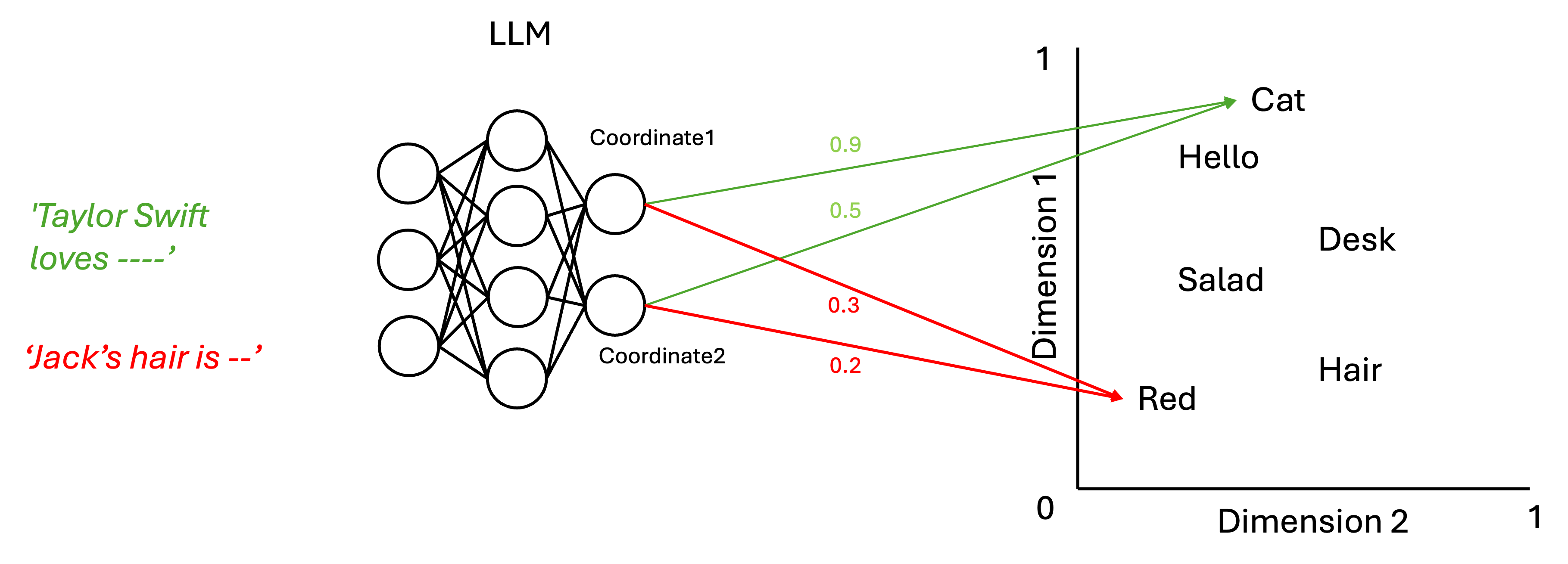Although AI modules such as GTP 4 can seem very lifelike, managing to compile loads of information and answer most questions in any manner you like, Chat GPT, Llama and Gemini are examples of AI models known as large language models, based off a mathematical models known as transformers (GPT is an acronym for ‘generative pretrained transformers’).
These models work by taking millions sentences containing the same words in different contexts and finding them a unique position (or coordinates) in a thousand-dimensional space. Although this may sound complicated at first, we can imagine the same concept in 2 dimensions.

Word Feature Space
When you ask a question, the model will break the question down into sections known as 'Tokens', and tries to guess the next word in the sentence based on the coordinates that are produced by processing the token.

LLMs are excellent predictors given enough data
The key innovation and main focus of AI is machine learning. These are the mathematical algorithms that in our pervious example, allows the model to guess properly, after seeing multiple examples of what it is trying to learn. For small models that can tell the difference between cats and dog, these can be hundreds of images. For chat GTP4, it can be 45 terabytes of data.
For GTP models, these algorithms take all the data and use each example to slowly change billions of numbers, arranged in layers, to a value between 0 and 1, with the aim that if a certain set of words was fed to the model, the word following this set would be located inside the multi-dimensional space. If a GPT model sees enough university English reports as well as all the works of Shakespeare, it can accurately generate a A* report about hamlet, however if it has never seen Charles Dickens it will struggle to write anything meaningful about Great expectations.
These examples don't just work for text, they can be used to recognise images, decode and translate conversations and track objects in videos. In the following modules, we’ll teach you how to use Microsoft’s azure AI services to change they way these complex models work to benefit your research using the data you provide it, allowing you to make use of modern AI without having to code any of the AI models yourself.